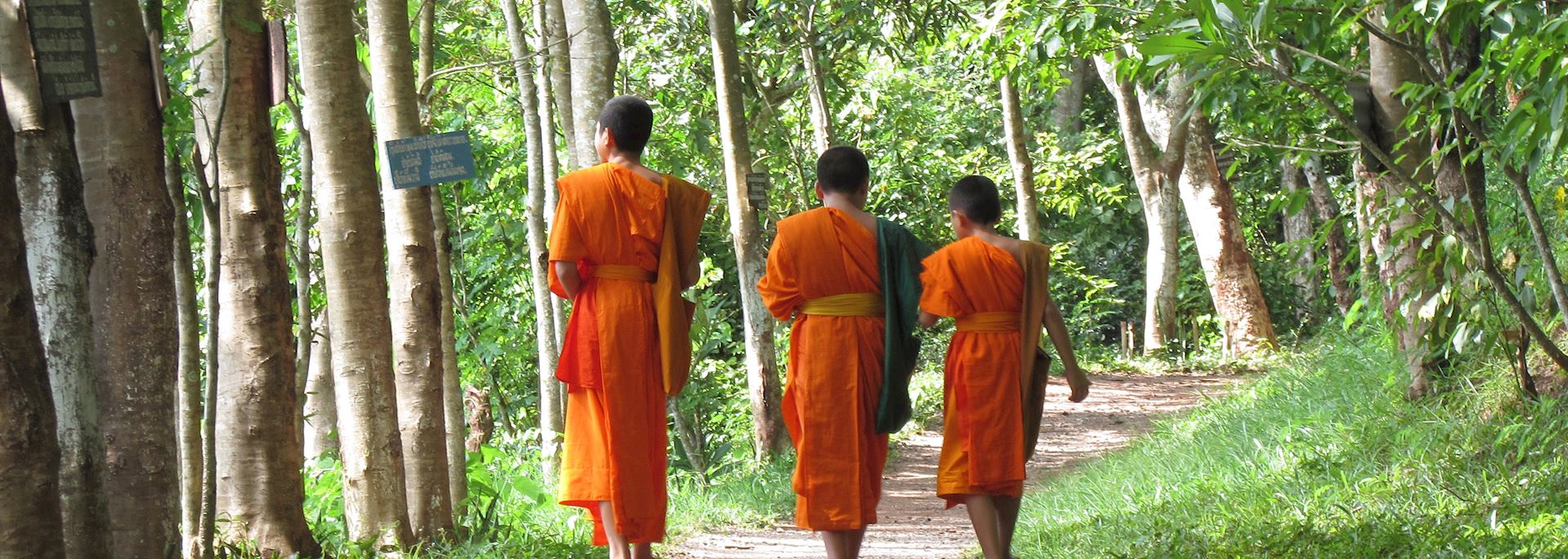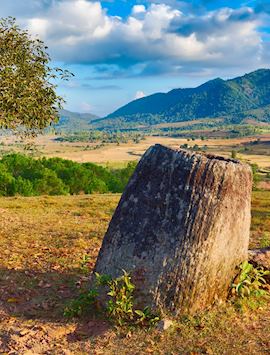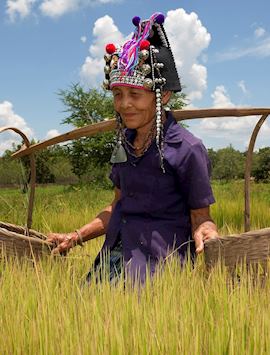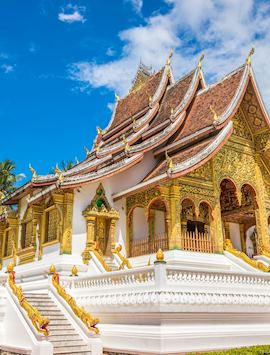By Audley Laos specialist Alex
On my first visit to Laos, I found it refreshingly undeveloped. Returning again, I’m always struck by the timeless quality of the country: very little changes. Western influences are minimal, while saffron-robed monks, small-scale farmers and isolated hill tribes continue to live at an unhurried pace.
On a recent trip, I focused on the north of the country, where craggy hills gradually rise up from the banks of the Nam Ou River and descend into sweeping valleys, sheltering remote villages. The region is best explored on foot and a versatile terrain for walkers, where you can choose a gentle walk of a few hours or a day’s scramble up the side of a waterfall.
Walking around Luang Prabang
Luang Prabang sits at the confluence of the Mekong and Nam Khan Rivers, encircled by gently rising hills. The town’s UNESCO World Heritage status has protected it from overdevelopment, and it maintains the tranquil ambiance you’d expect from Laos’s spiritual headquarters. As dawn breaks each morning, you can still see saffron-robed monks calling house-to-house to collect alms.
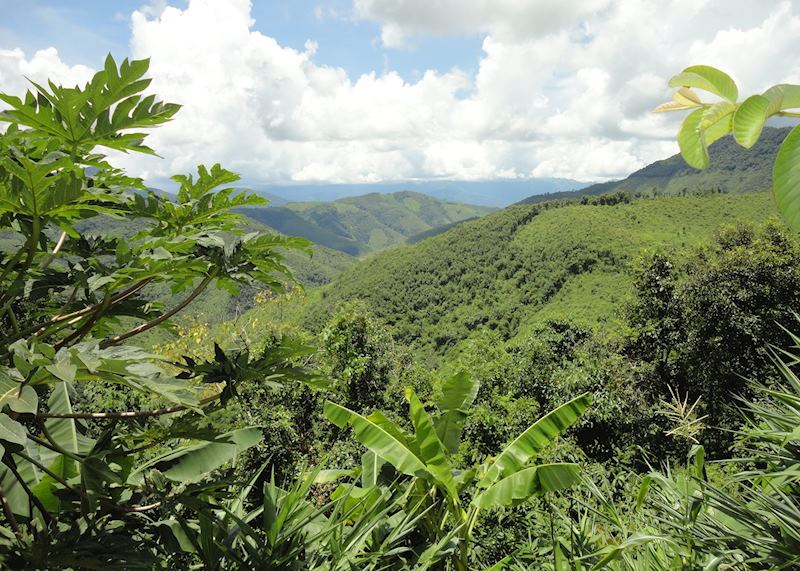
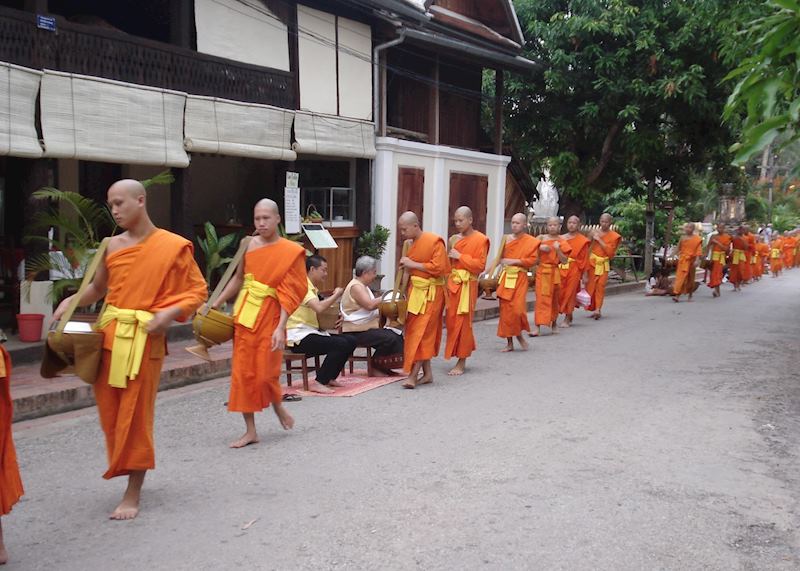

Luang Prabang has plenty to commend it to visitors, including 30 exquisitely decorated temples scattered across the city to explore, as well as boat trips on the Mekong. For trekkers, it also acts as a gateway to the higher hill regions to the north and, with an international airport and some comfortable hotels, makes a good base.
Where to stay in Luang Prabang
Options range from Le Sen, a good-value French colonial villa, to the luxurious Belmond La Résidence Phou Vao with its pool and spa.
I stayed in Angsana Maison Souvannaphoum — the former residence of Prince Souvanna Phouma — as it’s a short walk from the evening market. The French-colonial main building houses four suites, including the prince’s old bedroom, and more contemporary rooms in a modern wing. The staff couldn’t have been more welcoming, and there’s a pool area (although most pools in Laos aren’t heated, so can be a bit chilly).
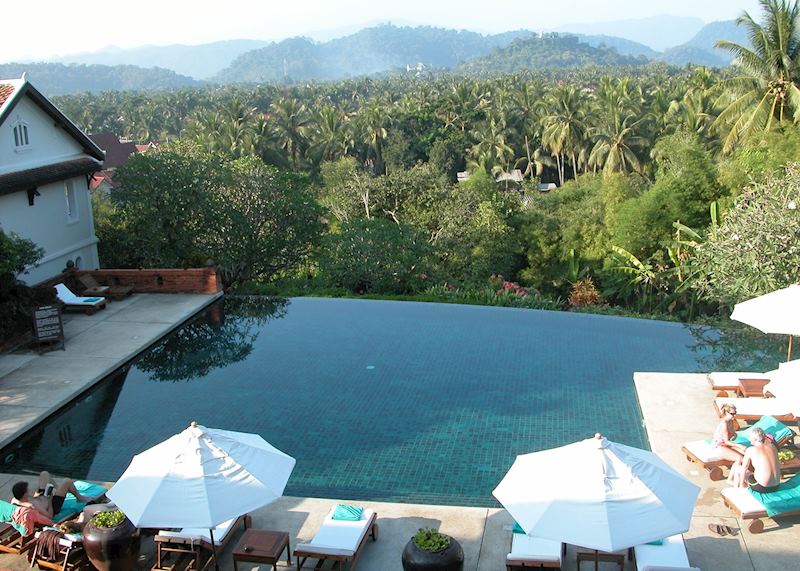
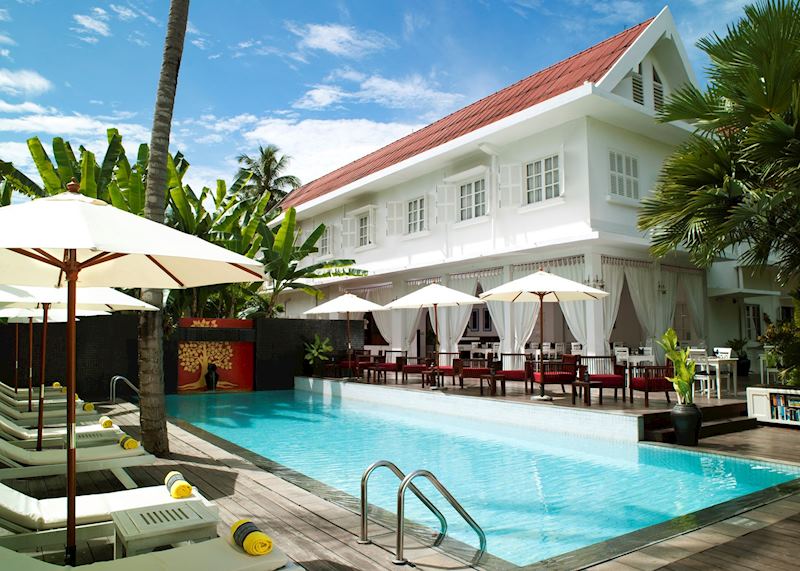
Walks around Nong Khiaw
The village of Nong Khiaw is a quiet backwater town, about two and a half hours’ drive north from Luang Prabang. It perches on the banks of the Nam Ou River, on a narrow crescent of land that butts up against the forested hills of northern Laos.
Half-day walk to Phatok Cave
If you’re after flat, gentle walking, the wide paths from Nong Khiaw to Phatok Cave are ideal. It took me and my guide about three hours, with plenty of stops, to complete the round journey.
We walked out of Nong Khiaw, passing rice paddies and neat farmsteads, with the mountain scenery rising up on either side of us. Although we were walking along a (very basic) road, I didn’t see a vehicle all day.
In the sixties and seventies, Phatok Cave was used by local villagers to shelter from American bombings during the second Indochina war. The cave entrance is high on the side of a cliff. It was originally reached by a bamboo ladder, but you can now climb a staircase built into the side of the rock. There’s not a huge amount to see inside, but my guide (a resident of the local area) described what it might have been like to seek shelter there.
On the return journey we passed through a local Khmu village. Indigenous to northern Laos, the Khmu people are adept at living off the surrounding forest, as well as farming rice and growing bamboo for weaving. Most of the residents were working the fields, the children playing in the courtyards, overseen by elderly villagers. As we left, the track entered a forested area and we were suddenly caught in a kaleidoscope of butterflies, which had been feeding on the foliage.
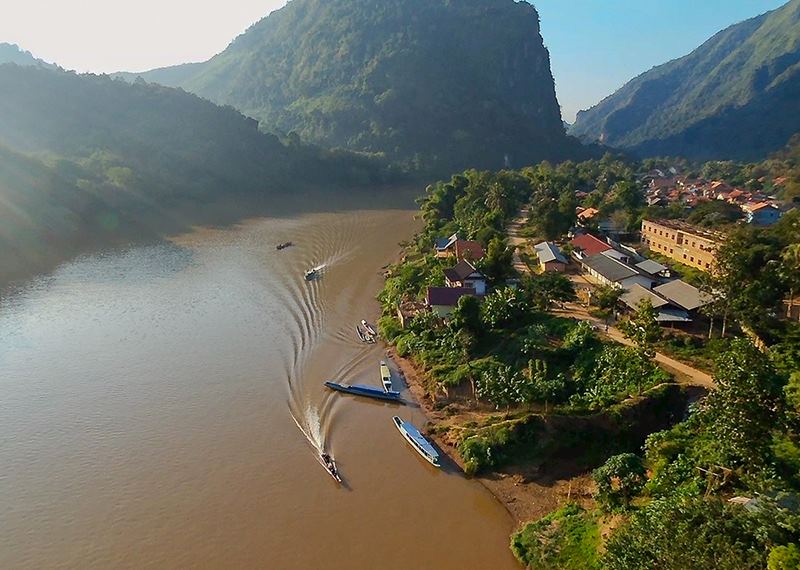
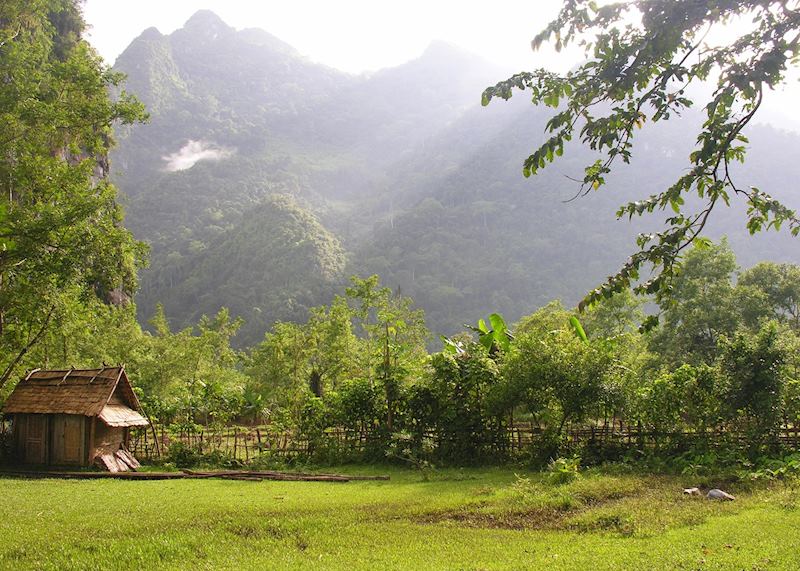
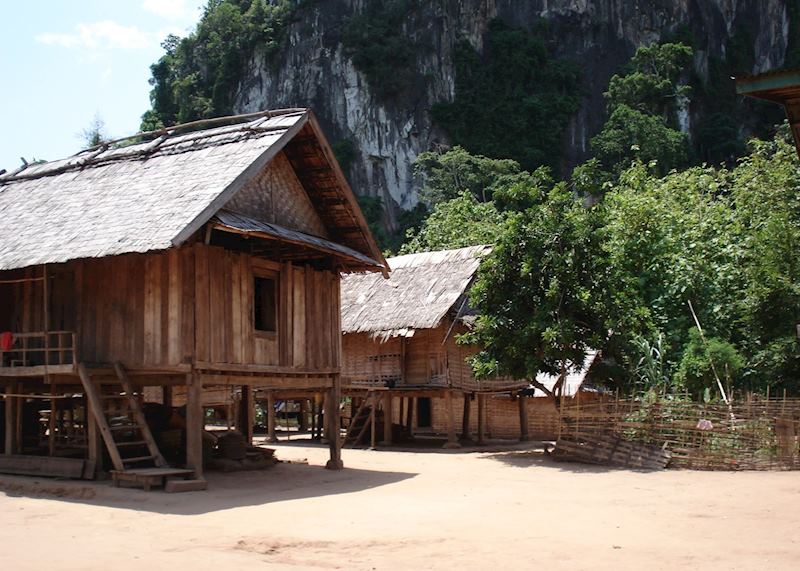
A full-day walk, with kayaking
It’s possible to combine a longer, three-hour walk from Nong Khiaw with a return journey on the Nam Ou River. Following a path used by local hunters, you head into the mountains through forests and fields.
The route runs through a number of villages, including Ban Huai Khong where you can stop for a picnic lunch. Traversing a few streams, you then descend to the banks of the river, from where you can kayak back to Nong Khiaw (or be paddled back in a private longtail boat, if you prefer).
The 100 Waterfalls trek
For a more challenging adventure, I suggest a trek to the top of the 100 Waterfalls. After a peaceful boat ride along the Nam Ou River, you disembark and walk past rice paddies and small streams before reaching the bottom of the waterfalls. The falls are a cascade of pools, boulders and gullies, enclosed by jungle.
You scramble up the waterfall for about 2 km (1.2 miles). At some steeper sections, bamboo ladders or ropes are in place to help you up. I suggest bringing swimwear, as you can cool off in the pools. At the top of the falls your guide will provide you with a packed lunch to eat before the walk back down (on a much easier path).
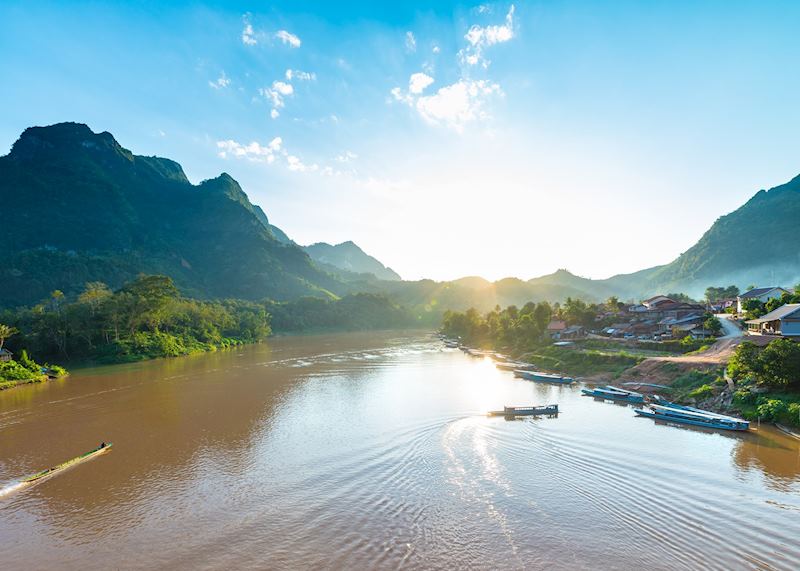
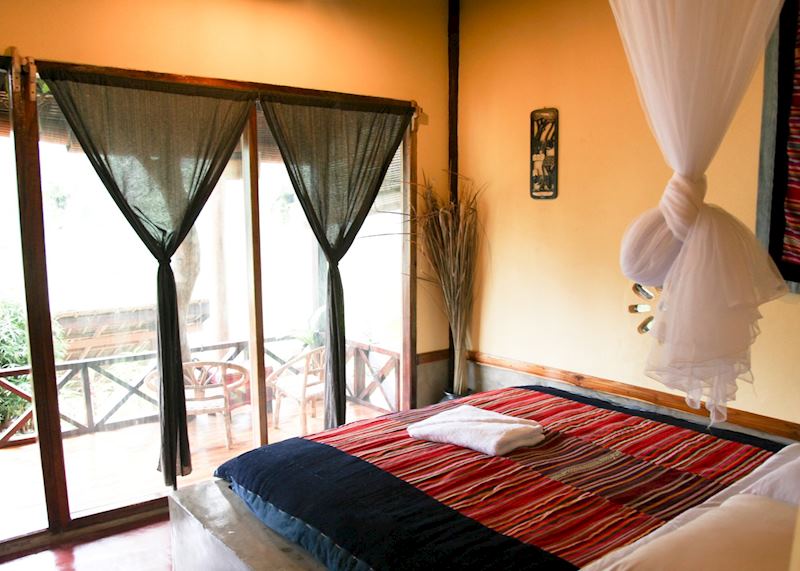
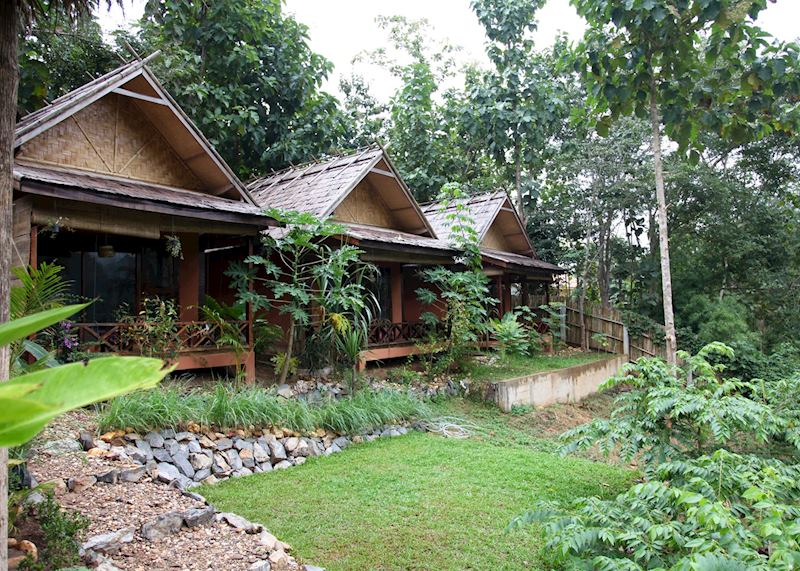
Where to stay in Nong Khiaw
At Mandala Ou, you can sit in the infinity pool and enjoy an unspoiled view of the river below with the jungle-clad karst hills rising directly above. There are ten detached wooden bungalows, each with a thatched roof and private terrace. You can explore the village on one of the hotel’s bicycles and relax after walks in the Laotian herbal sauna.
Village walks from Muang La
The journey from Nong Khiaw north to Muang La is an experience in itself. It began by boarding a small wooden longboat, just for me and my guide. We journeyed for five hours up the Nam Ou River, with the mountainsides gradually getting steeper. Aside from a few fellow longtail boats, we didn’t see anyone else all day. We docked at a point where the riverbank nears the road, and climbed ashore for a one-and-a-half-hour car journey to Muang La.
In a country predominantly made up of villages, Muang La is still classified as small. Set on the confluence of two tributaries of the Mekong, the village’s low-rise wooden homes are set around a central Buddhist temple. I suggest reserving a few days here to walk to some of the local villages and appreciate an area that few visitors make it to.

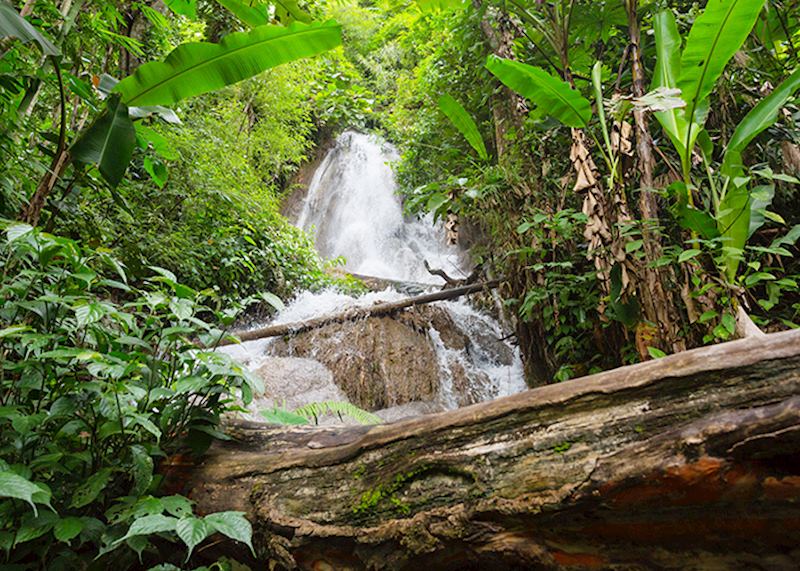
Khmu Village and Cave trek
With few roads in the area, residents tend to travel by foot, which has created a network of interlacing paths and trails. This makes it simple to tailor the difficulty of walks or base them around your interests: you can take a low-level walk through the surrounding paddy fields, or climb up into the mountains above.
I chose a challenging six-hour circular trek to visit some of the most isolated rural villages of the region. I was joined by my English-speaking guide and a guide from the local Kamu area, who knew the communities well. We set off along a forest trail, which wound between dense patches of woodland and sunny, open plains of rice.
When we arrived at the first village, young children ran out to say hello. Typically, the homes are built on stilts, with the odd dog or cat dozing underneath. Women sat in their doorways talking while preparing vegetables or rice. We wandered through the village to meet some of the residents before eating our picnic lunch of fried rice.
Continuing onward, we visited a series of caves sacred to the local Buddhist community. As I was beginning to tire, a young mother and son passed us carrying firewood in weaved baskets (almost as tall as they were) strapped to their backs — it definitely spurred me on.
Where to stay in Muang La
In a rural spot that was so isolated, it surprised me to find Muang La Resort. Ten individual stilted bungalows are set around a small garden, some overlooking the Nam Pak River.
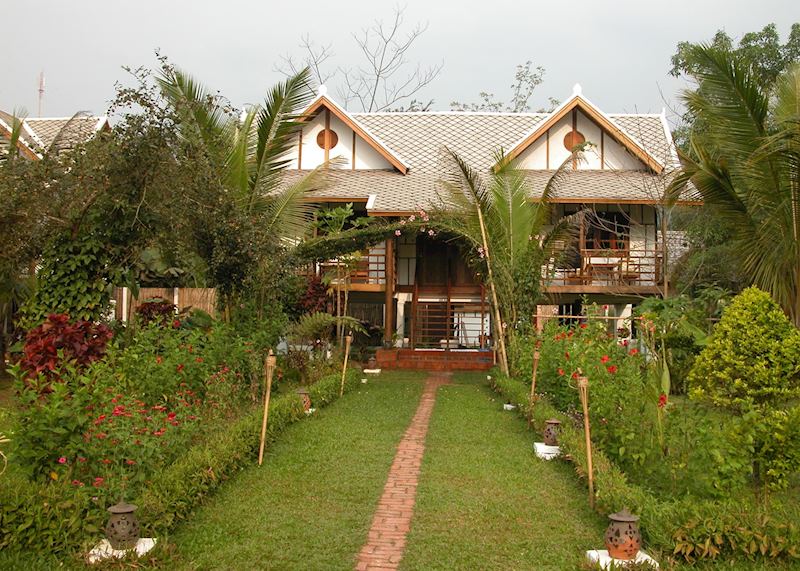

After a day’s walk, I recuperated in the hotel’s elevated hot tub to views across the river and surrounding countryside.
Dinner is a real occasion here, with five courses served on a terrace overlooking the river. Dishes use Laotian seasonings with a modern flair, decorated with edible flowers; the flan of steamed fish with spring onion and lemon balm is particularly good. There’s also a well-stocked wine cellar.
Extending your trip
It’s a full day’s scenic drive from Muang La back to Luang Prabang. From here, you could fly south to the French-colonial town of Pakse and explore the 4,000 Islands archipelago. Visiting Laos also combines well with Thailand, with direct flights from Luang Prabang to Chiang Mai or Bangkok.
What to consider when walking in Laos
- For the best walking conditions, visit in the dry season from November to March. The daytime temperatures average a comfortable 20°C (68°F), although you’ll need to pack layers for the cooler evenings.
- All the walks and treks we provide are privately escorted, so your guide can work to your pace and the walks can be tailored to your interests and fitness level.
- Some of the harder walks and hikes involve scrambling up scree or along muddy sections of path, so I suggest bringing good-quality walking boots with ankle support.
Start planning your trekking holiday to Laos
Start thinking about your experience. These itineraries are simply suggestions for how you could enjoy some of the same experiences as our specialists. They're just for inspiration, because your trip will be created around your particular tastes.
View All Tours in Laos
